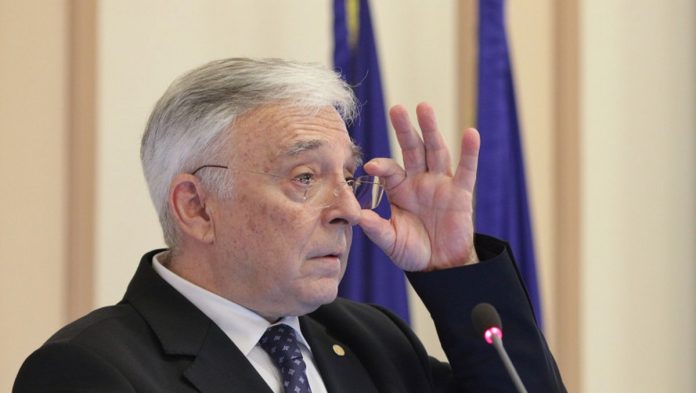Economies, Romania’s included, aim to ensure the robustness of economic growth and its sustainability in the long term, and the recent episode of high inflation rate led the central banks to respond through a cycle of monetary policy tightening, stated, on Tuesday, the governor of the National Bank of Romania, Mugur Isarescu, during a conference.
„The recent episode of high inflation rate led the central banks to respond with a cycle of monetary policy tightening, after a prolonged period of low and even negative interest rates before 2020. In the face of inflation, the public expects higher wages, and central banks seek to manage inflationary expectations to avoid triggering a wage-price spiral in the economy,” Mugur Isarescu said.
He noted that fiscal policies are aimed at consolidation, but nevertheless, more relaxed positions for longer time have reflected growing imbalances in fiscal and external positions, while exogenous shocks to monetary policies, such as geopolitical disturbances, shocks of global energy prices and climate events have amplified the imbalances. In this context, the interaction between monetary and fiscal policies reflects greater sensitivities and requires a prudent approach, taking into account the independence of monetary policy and the mandates of central banks.
The BNR governor also spoke about digitization in the banking sector, stating that the banks have intensified their investments in technological centers and operational efficiency, at the same time adopting actions to increase the resistance of cyber security and active measures against cyber terrorism. At the same time, central banks seek to strengthen the regulatory framework and supervisory assessment of the banking system, in a publicly accountable manner.
„Continuing with digital transformation, I would like to focus my words on an emerging frontier area in finance, which is crypto-assets and new financial technologies. As in many of my previous speeches, I remind you that we do not see crypto-assets as money, not even in the broadest possible sense. These are very volatile alternative investment products, as opposed to money that is liquid, safe and accessible. There are many differences between crypto-assets and the central bank’s digital currency and for a better understanding, financial education is essential, to bring these concepts to the public’s awareness,” Mugur Isarescu stressed.
The governor of the Bank of Israel, Amir Yaron, gave a lecture on „Challenges of the Modern Central Banks” at the BNR headquarters on Tuesday, an event at which governor Mugur Isarescu gave the opening speech.
AGERPRES




